The quarter-finals of the DFB Pokal saw Bayern Munich take on 2. Bundesliga side FC Heidenheim. In what unfolded as a nerve-racking contest of goals, penalties and cards, both teams adapted tactically throughout the game. In this tactical analysis we see how Niko Kovač’s Bayern gained an edge over Frank Schmidt’s Heidenheim to reach the semi-finals of the DFB Pokal.
Ever since Heidenheim achieved promotion to the second tier of the German League, they have not looked back. They continued their dream run in the cup after beating Bayer Leverkusen. Bayern Munich have left it to the second half of the Bundesliga season to pick up their invincible form. They managed to keep their standards high in the DFB Pokal and capitalise on their experience in the tournament to tackle the Heidenheim challenge with 10 men.
Lineups
Kovač decided to play Thomas Müller as the striker while keeping Robert Lewandowski on the bench as a backup. He also opted for the in-form Serge Gnabry to start and provide attacking threat alongside Franck Ribéry, who at 35 might very well be playing his final season with the German giants. In defence, he chose Niklas Süle to partner Mats Hummels.
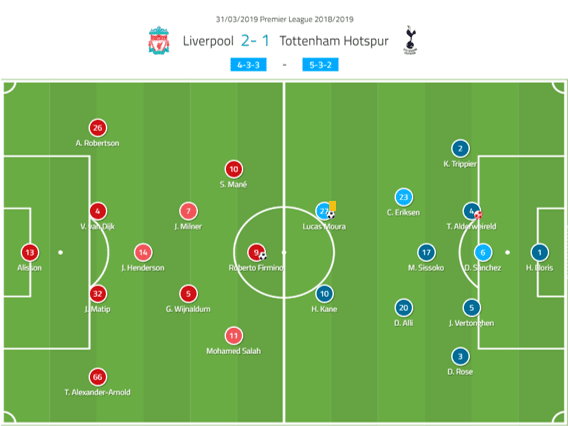
The Heidenheim line-up saw their regular 4-3-2-1 formation that sometimes transformed to a 4-4-2 in defensive phases. Robert Glatzel was their reliable goal-poaching target man alongside captain Marc Schnatterer. Heidenheim maintained a packed midfield of three in front of their back four, marking central midfielders aggressively and keeping spaces tight.
Heidenhein anticipated Bayern would play out from the back instead of aiming long balls to Müller or Gnabry. Hummels and Süle sought James, Thiago or Goretzka to receive passes between the lines and progress higher up the pitch.
Heidenheim go man-to-man
Heidenheim are a very brave side in their high-octane pressing game against much stronger teams. They manage to constantly apply pressure, especially on the central players, making it very difficult to keep possession and control the middle. We saw this tactic successfully employed against Bayer Leverkusen.
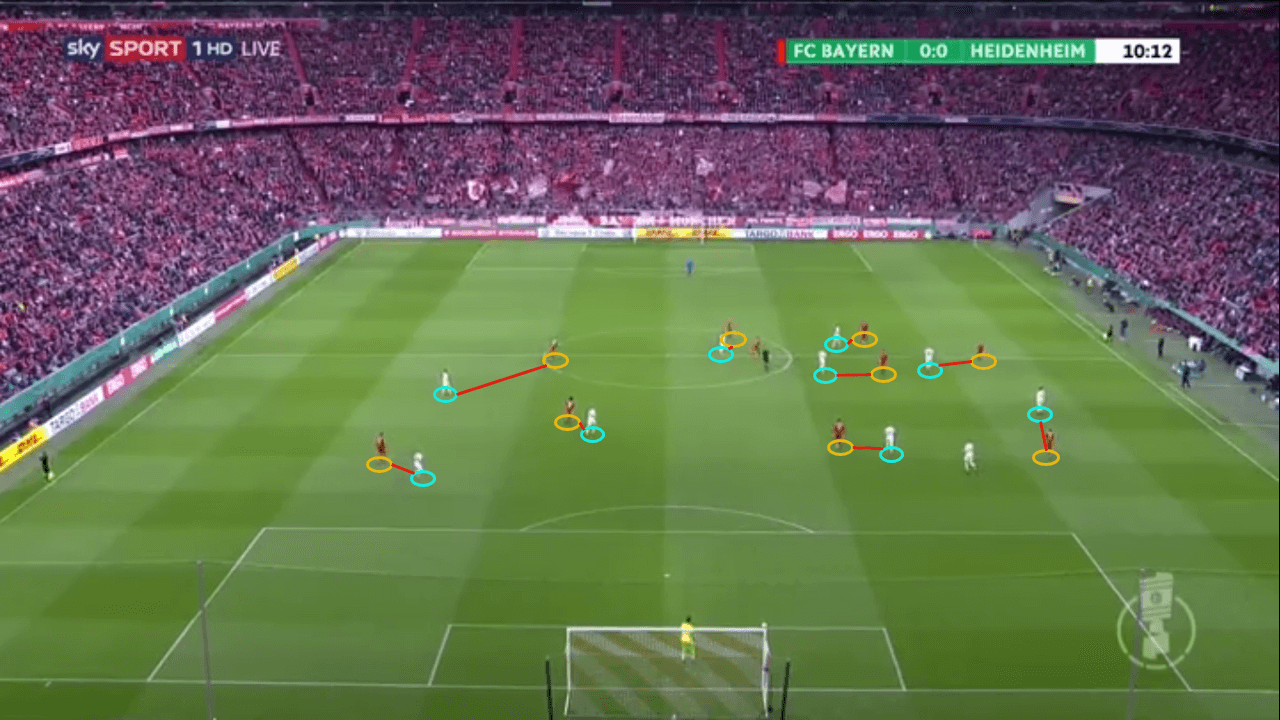
They engaged in man-oriented marking aggressively to close down Bayern’s three central midfielders: Leon Goretzka, Thiago Alcântara and James Rodríguez. Their defending began right from the top with Dovedan pressing the holding midfielder from the back. This made it very difficult for James and Thiago to play between the lines despite rotating the position of the holding midfielder.

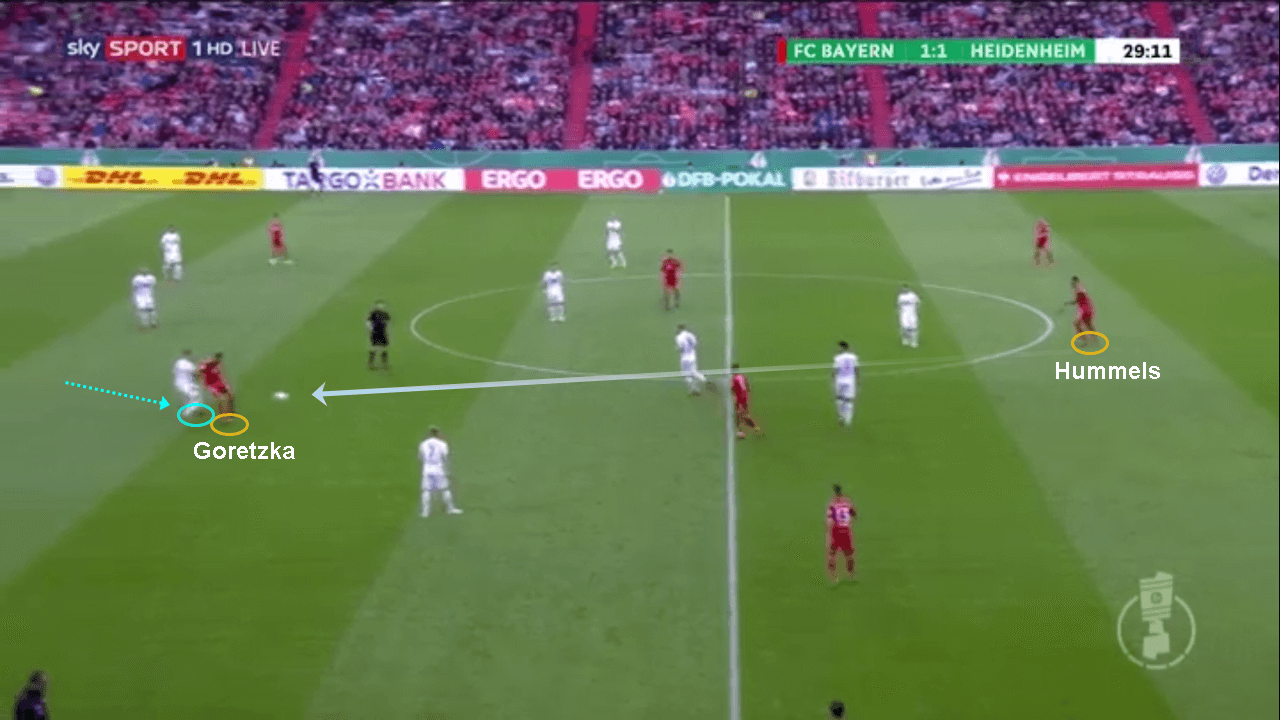
Heidenheim’s disciplined pressing for the first few minutes, despite conceding first, forced an error from Bayern while playing out from the back. Thiago played a loose pass to give away possession cheaply and was quickly intercepted. Süle went in hastily on a slide tackle that cost him a red and brought Bayern to their knees with 10 men for the remaining 75 minutes of the game.
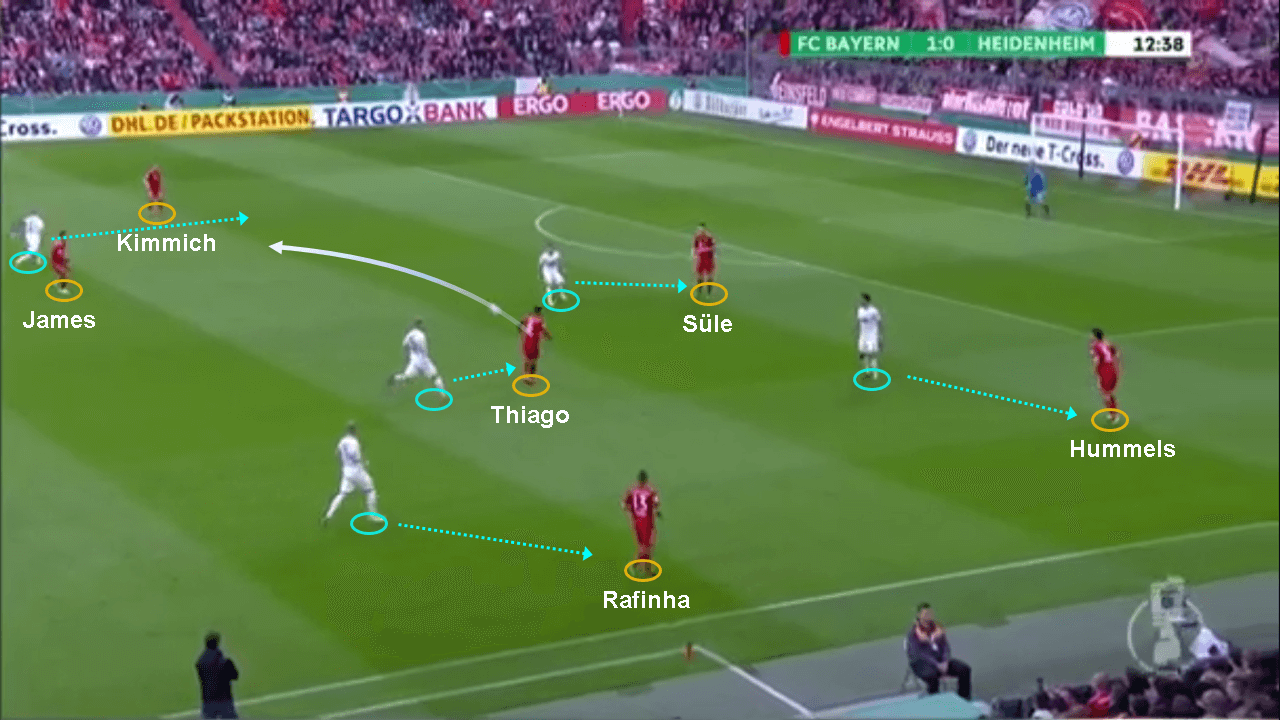
The numerical imbalance
A major part of the game was played with a 10v11 imbalance. Although it was evident that Heidenheim held the numerical superiority overall, football is ironically influenced by 2v2 or 3v2 situations across the pitch. Both teams used this to gain an advantage over the other. After Süle’s red card, Kovač replaced Ribéry with Jérôme Boateng, which helped Joshua Kimmich push higher. Boateng almost played as a right full-back with only Hummels and Rafinha at the back.
Heidenheim stuck to their disciplined pressing strategy throughout the game, denying Bayern any control over the centre of the pitch. During the first half they successfully managed to cut out Müller from the game, especially after Bayern played with a player less.
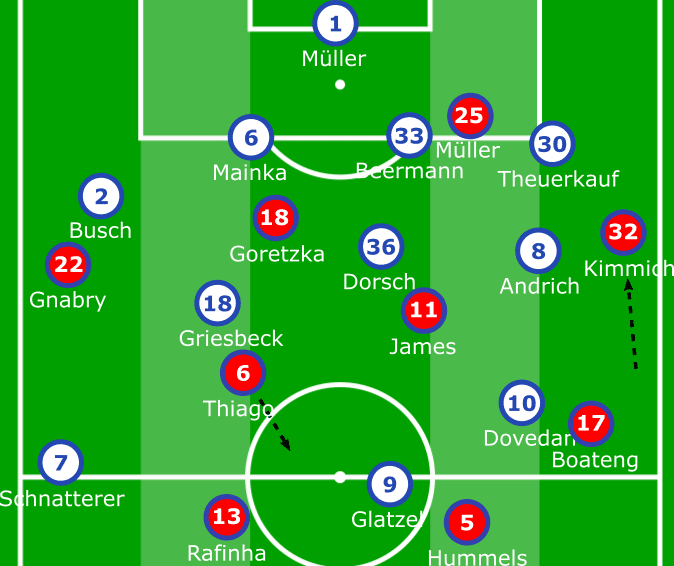
Bayern, on the other hand, did not sit back despite playing with a man down and pushed forward aggressively. The risk of the counter did hurt them, but they also managed to wrest attacking control over the game.
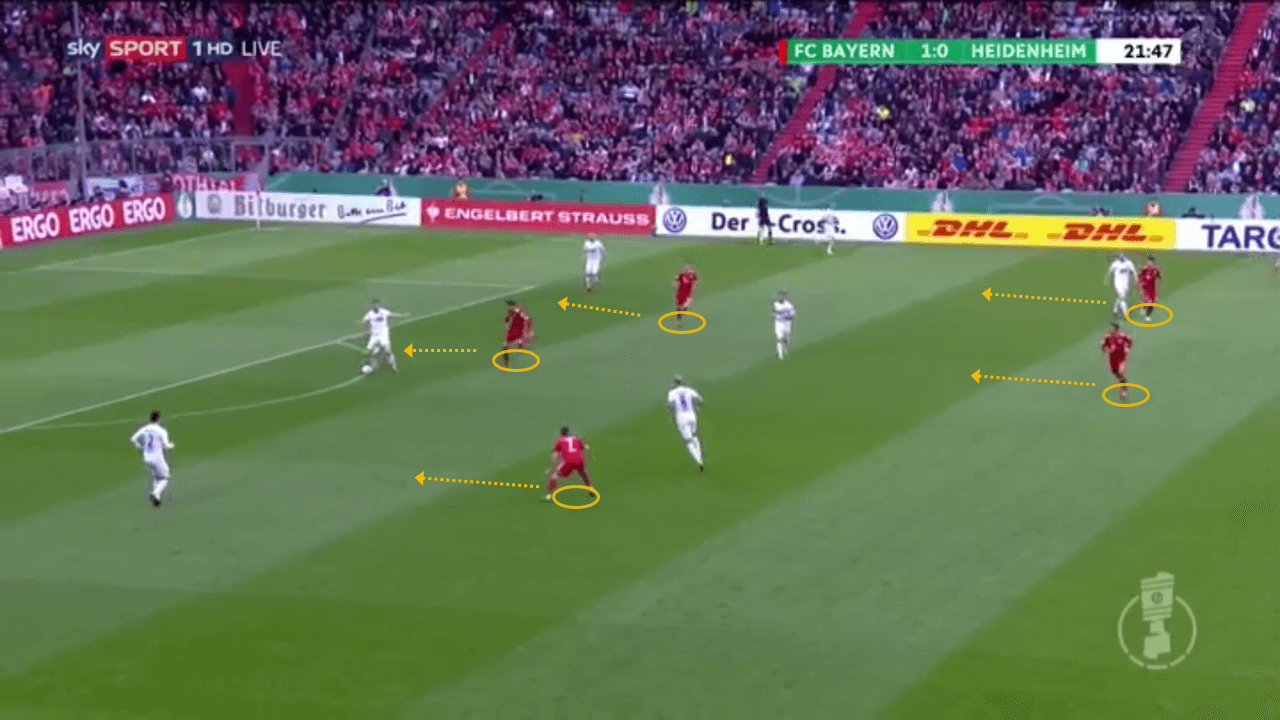
Set-pieces: Heidenheim’s Achilles heel
Although man-marking was fundamental to their open play, it was their weakness at set-pieces that hurt them. Two of their five goals were conceded due to a lack of concentration at set pieces that left Bayern players unmarked.
In the first goal that came off a corner, Goretzka was left flagrantly open for a free header despite having three Heidenheim defenders in front of him. This gave Bayern an early advantage and a deficit that Heidenheim needed to catch up throughout the game.

In the second half, Serge Gnabry was left unmarked again. He managed to time his run perfectly to stay onside and finish.

A battle of transitions
A characteristic of German football is the speed of counter-attacks and the dominant game play in the phases of transition. This game set an example to prove this point. Both teams were very quick to react on transitions to create chances for themselves.
A general trend observed by both teams was to keep it compact while defending. This gave either team a lot of space out wide which turned out to be dangerous for each other. In the first half, Heidenheim astutely exploited a weakened Bayern side, hit by Süle’s red card, in transition. Glatzel managed to drift wide and pick out the cross from Schnatterer to head the first equalising goal for Heidenheim.
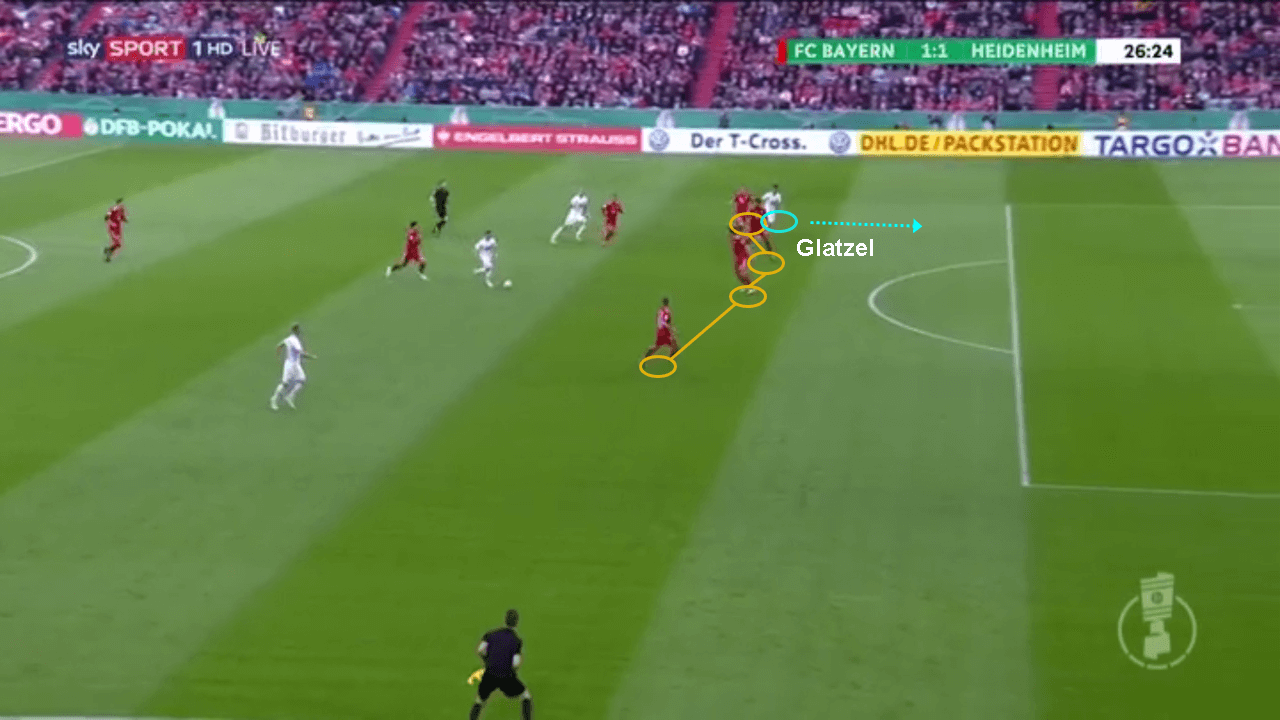
In the second half, Bayern changed their tactics to release Müller, Gnabry and Lewandowski. They struck two goals in quick succession within minutes of commencing the second half, the second of which was a product of a textbook transition in attack.
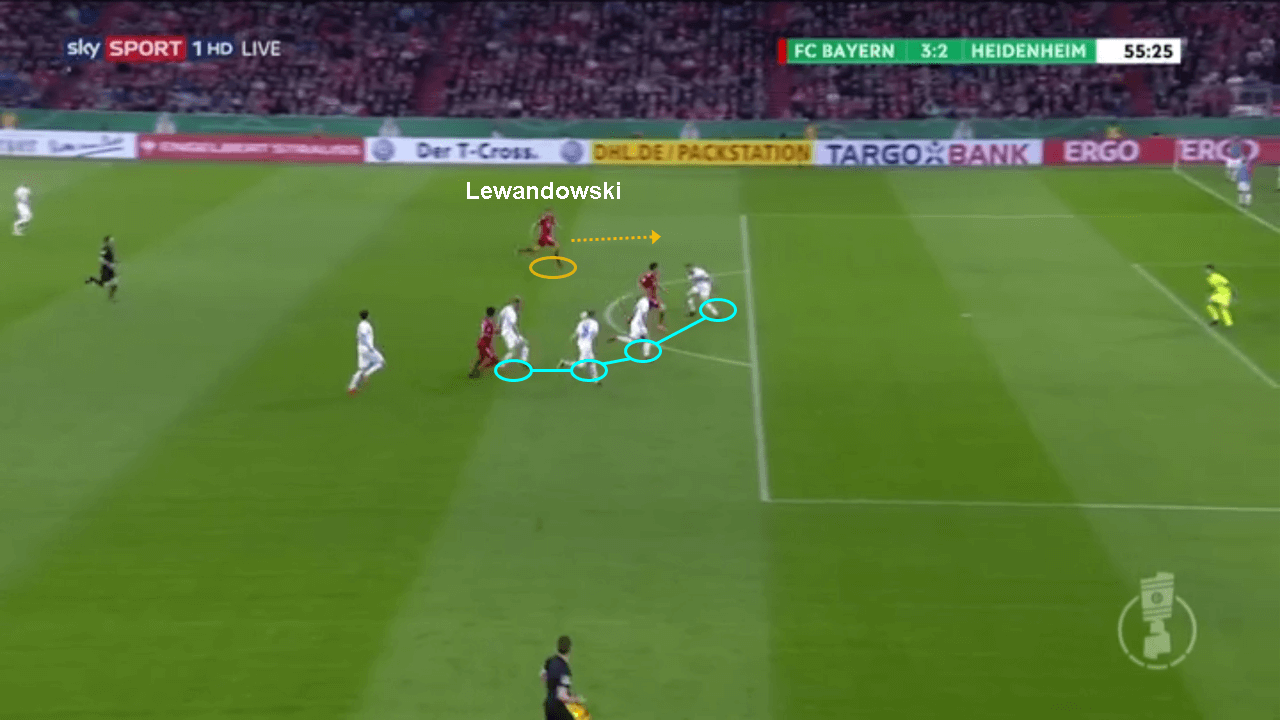
Bayern switch tactics at half-time
The red card hit Bayern hard and left them in a state of shock at the Allianz Arena. Heidenheim quickly abused their misery by using width and quick counters to gain a 2-1 lead before half time. They exploited the space on the right side left by Boateng’s instincts to push higher.
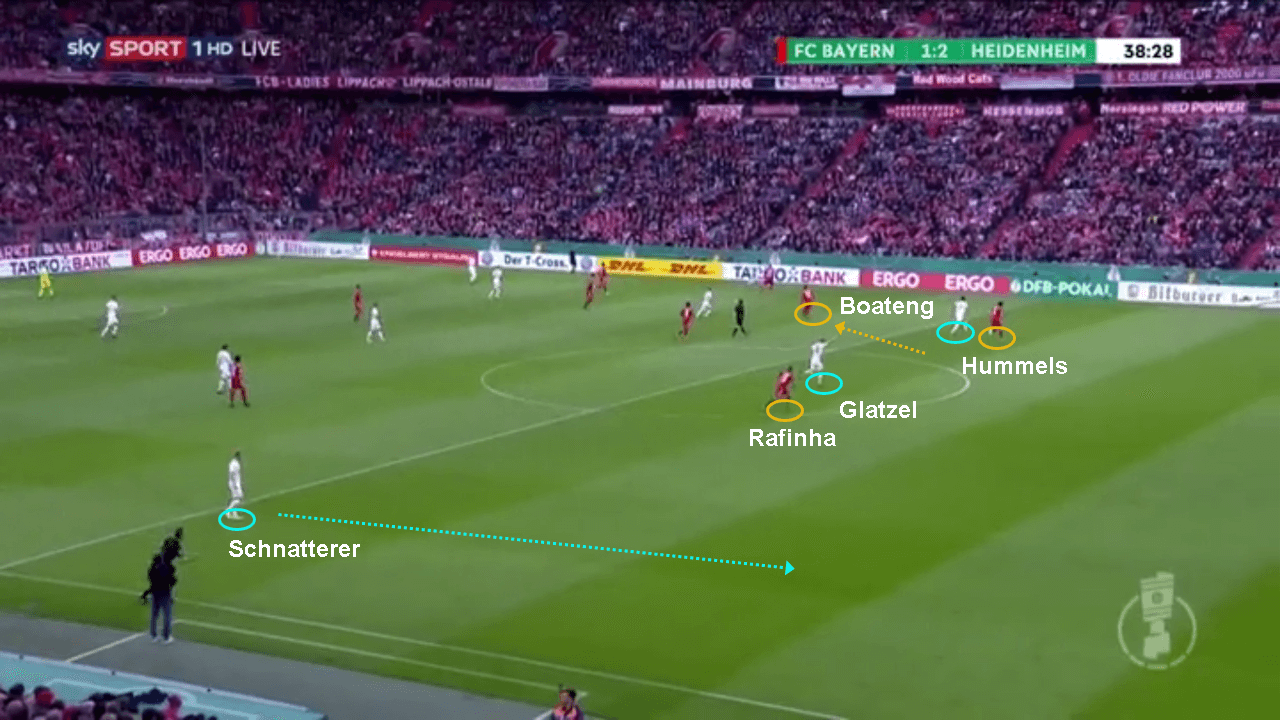
Kovač made a careful note of this issue and rectified it coming into the second half. He started the second half replacing James with Lewandowski. He also dropped the left-back Rafinha in favour of Kingsley Coman. Bayern started the second half with a back-three of Hummels, Jerome Boateng and Joshua Kimmich. This gave them more players in midfield and attack.
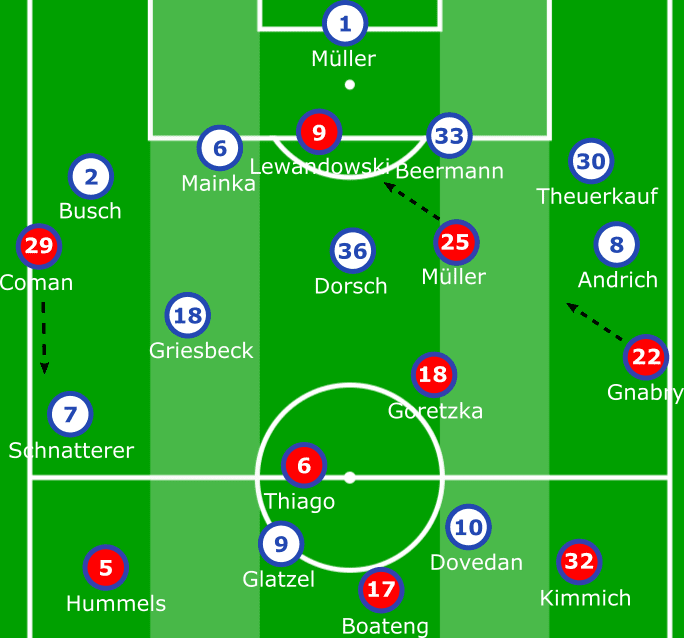
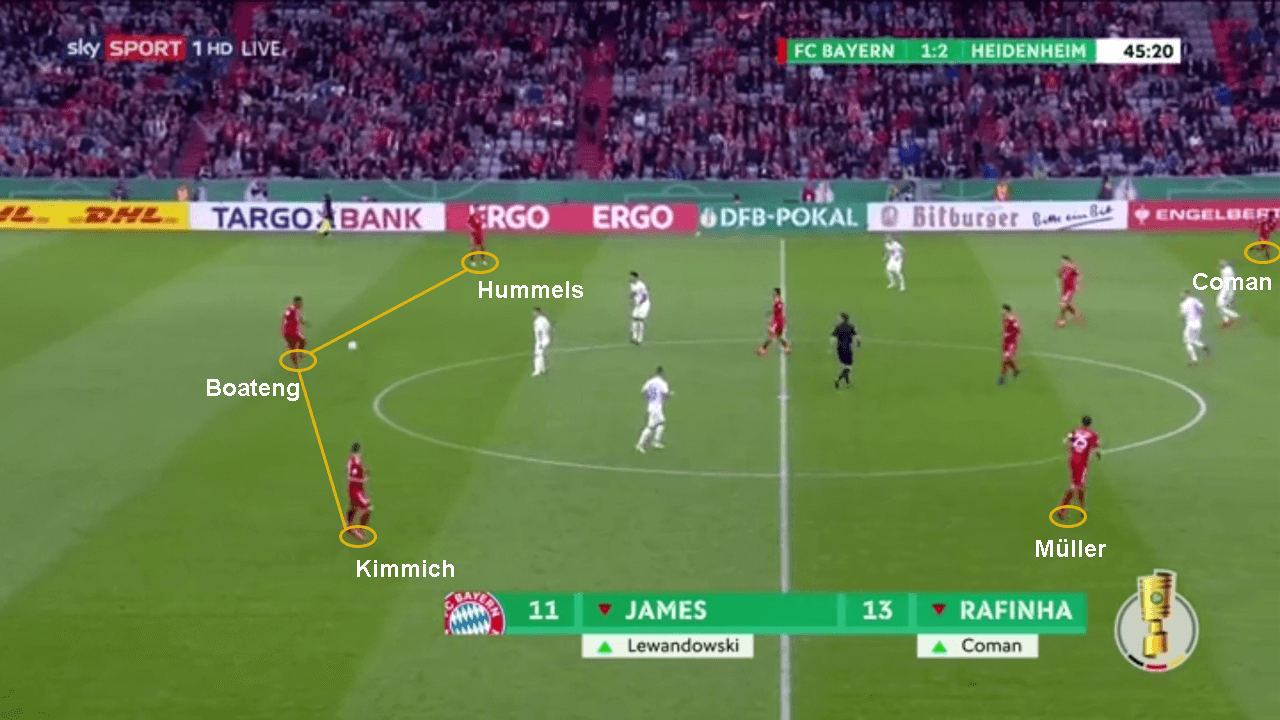
Bringing on Lewandowski allowed Müller to play a free role in attack. The pair combined quickly to equalise five minutes into the second half and gain a lead immediately after. Bayern played the second half with almost five players in midfield: Coman, Thiago, Goretzka, Gnabry and at times Müller. Heidenheim found it difficult to adapt to this midfield overload.
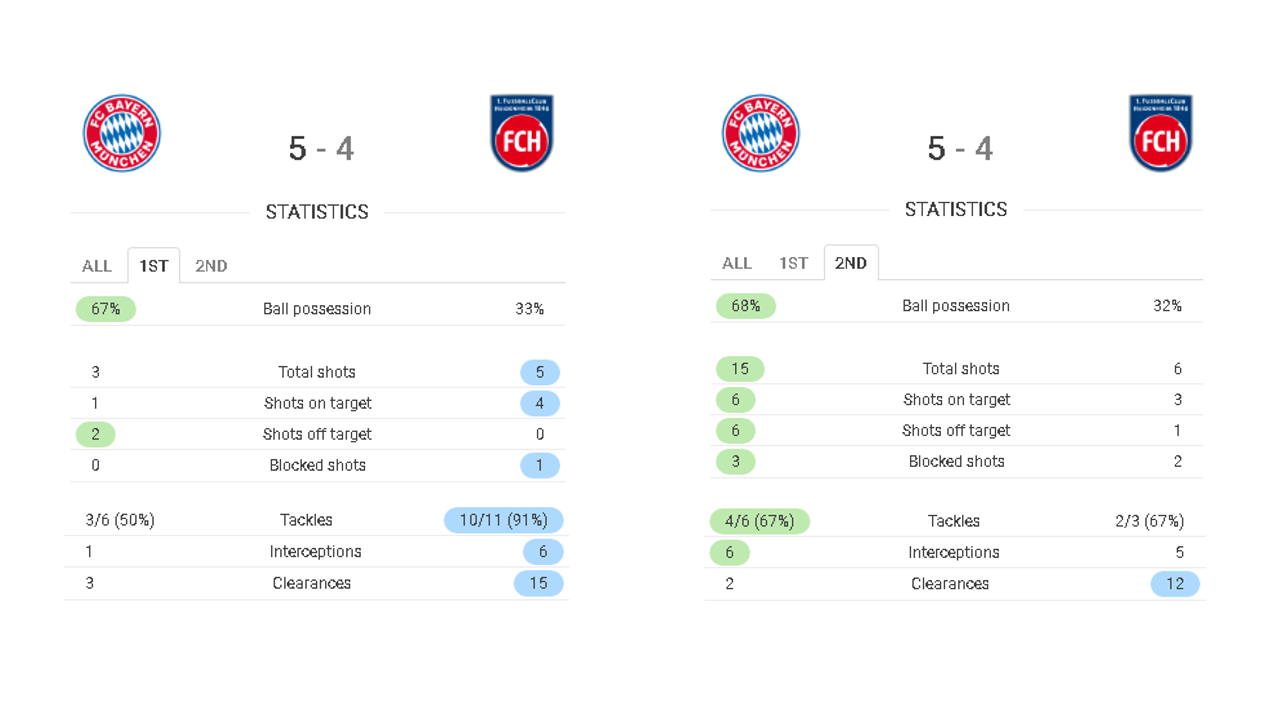
Robert Glatzel: ‘The Heidenheim Hero’
Bayern switching tactics at half time meant Schnatterer couldn’t get as much space as before. He was substituted for Maurice Multhaup, a more defensive option as part of a damage limitation strategy following Bayern’s quick goals.
Heidenheim targeted the space left by Coman when he pushed higher and exploited it successfully against a Bayern back three. Glatzel was the perfect striker to exploit this space and hit Bayern on the counters. He scored a brilliant hat-trick and Heidenheim almost drew level in the final minutes of the game.
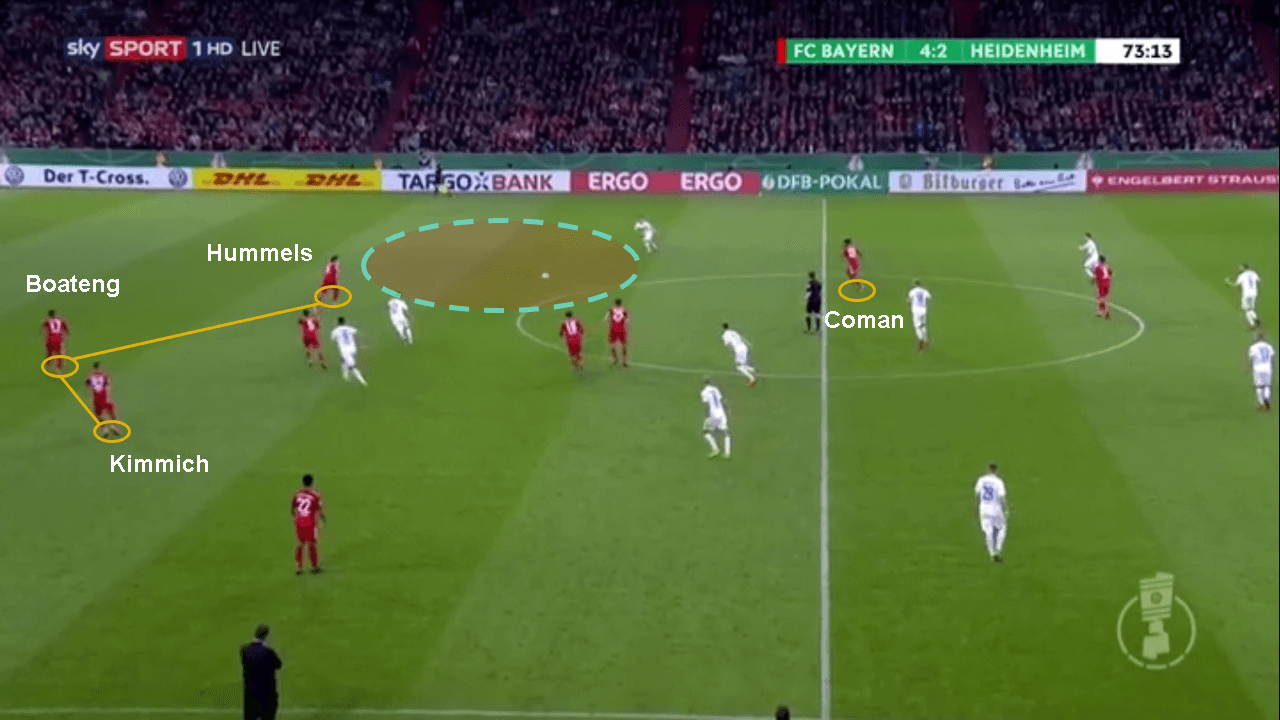
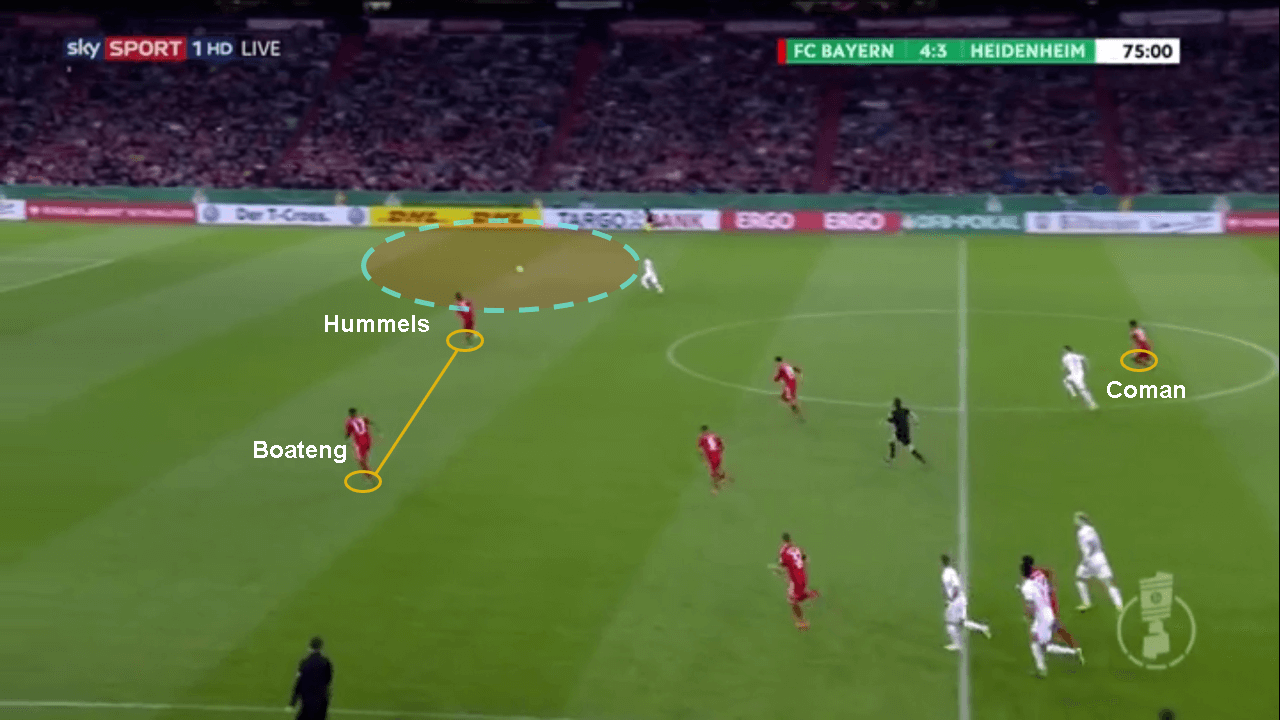
On the other side for Bayern, Müller made a big difference to Bayern’s game in the second half playing in a free attacking role. He used his free playmaker role to create important chances for Bayern and was key to their goals in the second half to win it for the Bavarian side.
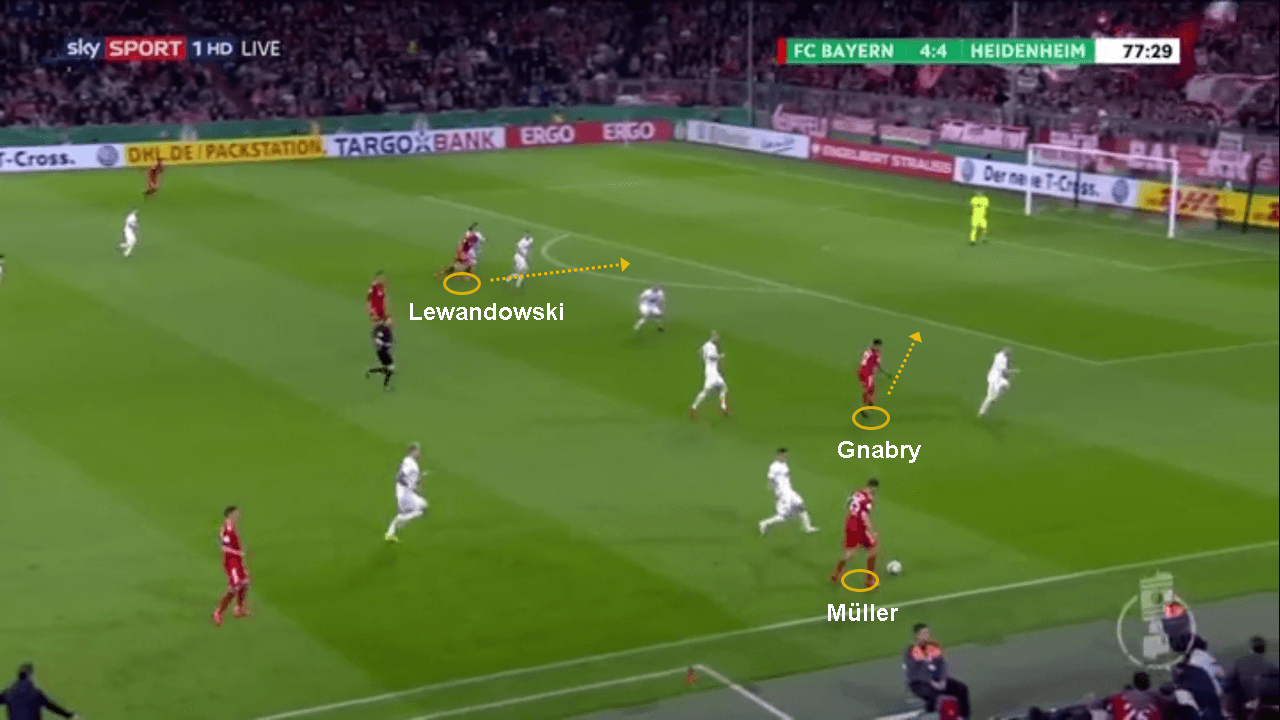
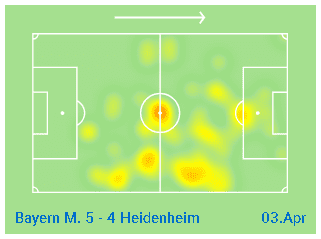
Conclusion
Heidenheim put in an impressive performance against the Bundesliga leaders, and the gigantic scoreline at the Allianz Arena is a testament that will go into the record books for the minions from Baden-Württemberg. The game in true German spirit was exciting to watch with plenty of end-to-end attacking football.
Bayern Munich showed their class by playing 75 minutes of the game with one player less, yet with no dearth of the famed Bavarian intensity. By keeping up their dominant form they have picked up recently, Niko Kovač proved why he deserves credit for his tactical management during challenging games such as this to keep the Bavarians in their winning ways.
If you love tactical analysis, then you’ll love the digital magazines from totalfootballanalysis.com – a guaranteed 100+ pages of pure tactical analysis covering topics from the Premier League, Serie A, La Liga, Bundesliga and many, many more. Buy your copy of the March issue for just ₤4.99 here, or even better sign up for a ₤50 annual membership (12 monthly issues plus the annual review) right here.

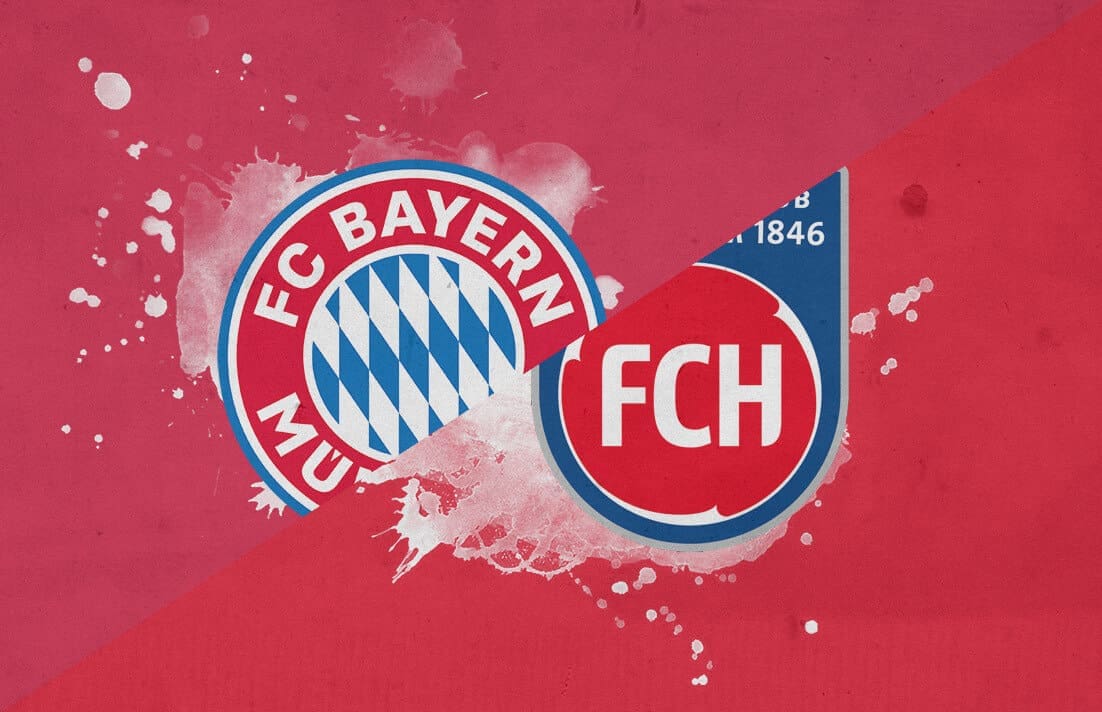
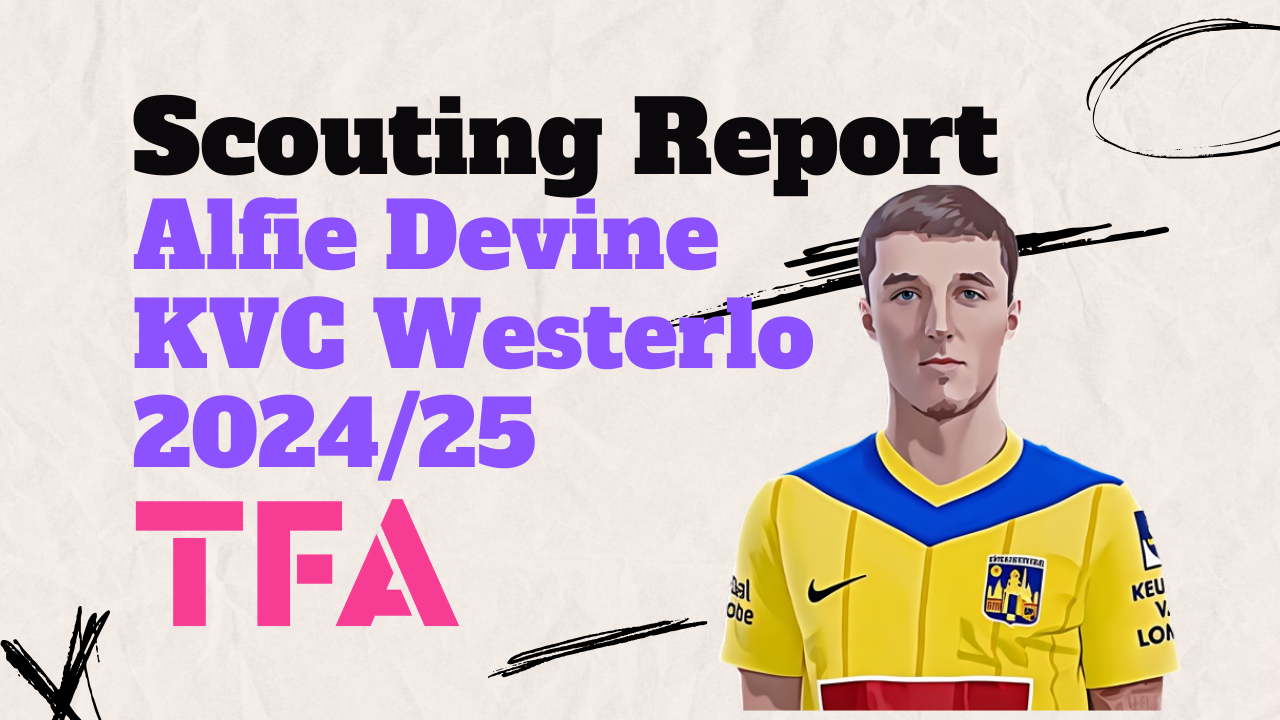
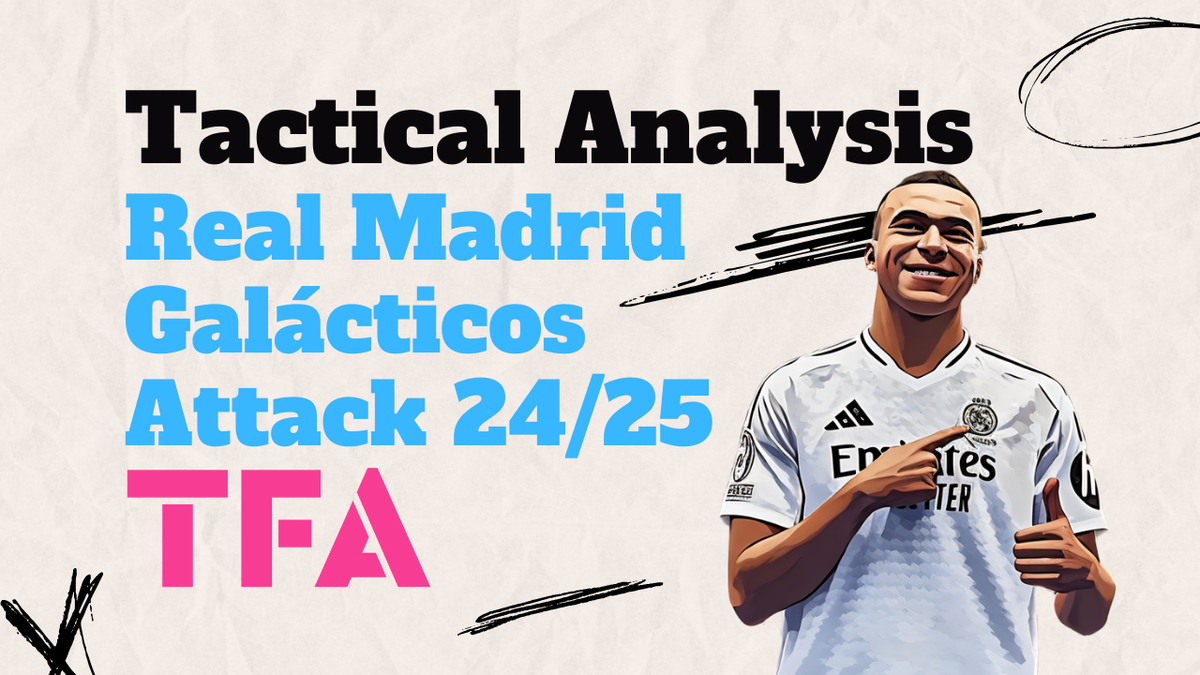
Comments